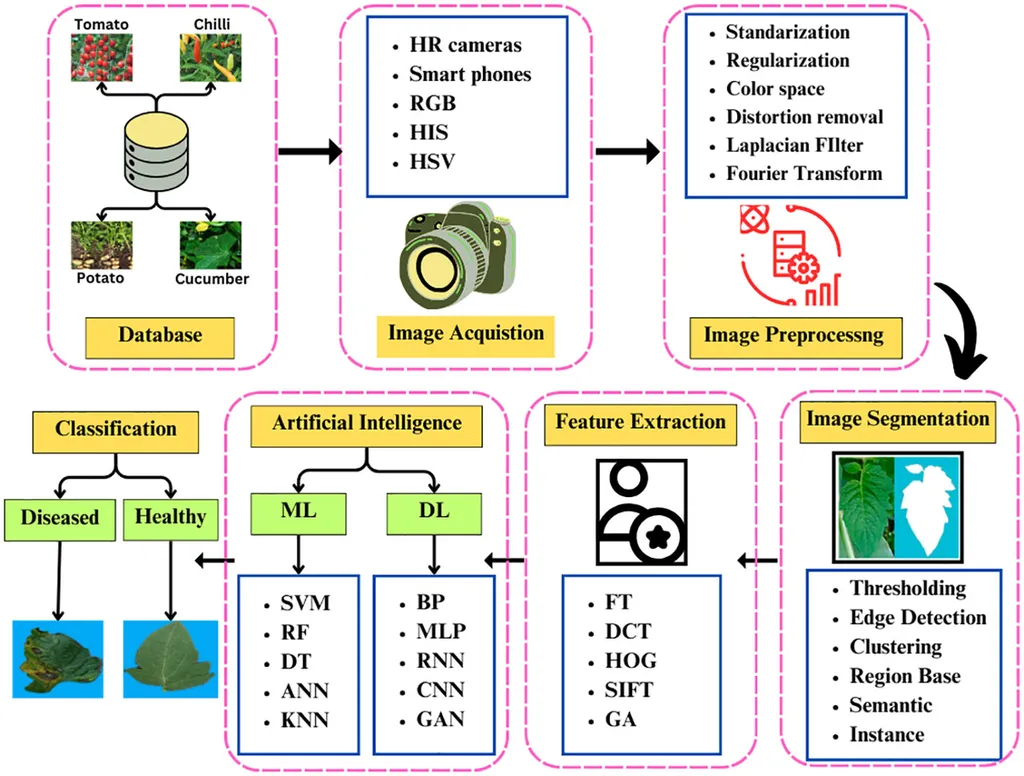In the heart of Indonesia, researchers have developed a cutting-edge method to combat one of the sugarcane industry’s most pressing challenges: leaf disease detection. The study, led by Mufidatul Izza from Universitas Yudharta Pasuruan and published in the *Journal of Applied Informatics and Computing*, combines the power of artificial intelligence and machine learning to revolutionize disease identification in sugarcane plants.
Sugarcane, a vital commodity in the global sugar industry, is susceptible to various leaf diseases that can drastically reduce crop yields and quality. Traditional manual identification methods are not only time-consuming but also prone to human error. To address this issue, Izza and her team turned to digital image processing and machine learning techniques.
The researchers employed a pre-trained VGG16 model as a feature extractor, coupled with a Support Vector Machine (SVM) classifier. “We aimed to create an automatic detection system that could accurately identify diseases like Red Rot, Rust, Yellow Leaf, and Mosaic,” Izza explained. The team utilized the Sugarcane Leaf Disease Dataset from Kaggle, which consists of 2,521 images across five disease classes. Through data augmentation techniques, they balanced the dataset to include 3,000 images, ensuring robust training for their models.
The preprocessing stage involved resizing the images to 224×224 pixels and normalizing them using the preprocess_input function. The researchers tested three model scenarios: SVM alone, VGG16 alone, and a combination of VGG16 and SVM. Evaluation was conducted using an 80:20 train-test split and 10-fold cross-validation, with metrics including accuracy, precision, recall, F1-score, G-Mean, and AUC.
The results were impressive. The VGG16+SVM model outperformed the baseline SVM and VGG16 + Softmax, achieving an accuracy of 99.60% on the 80:20 scheme and an average accuracy of 80.76% on 10-fold cross-validation. “The integration of VGG16 feature extraction with SVM classification proved to be highly effective, providing stable and accurate performance,” Izza noted.
The implications of this research for the agriculture sector are significant. By automating the detection of sugarcane leaf diseases, farmers and agronomists can make faster, more informed decisions, ultimately leading to improved crop yields and economic benefits. “This technology has the potential to support precision agriculture, enabling targeted treatments and reducing the need for broad-spectrum pesticides,” Izza added.
Looking ahead, this study paves the way for further advancements in image-based plant disease detection systems. As AI and machine learning technologies continue to evolve, we can expect even more sophisticated and accurate methods for monitoring and managing crop health. The work by Izza and her team is a testament to the transformative power of technology in agriculture, offering hope for a more sustainable and productive future.
Published in the *Journal of Applied Informatics and Computing*, this research not only highlights the potential of AI in agriculture but also underscores the importance of interdisciplinary collaboration in addressing global challenges. As the world grapples with the impacts of climate change and population growth, innovative solutions like these will be crucial in ensuring food security and economic stability for millions of people.

